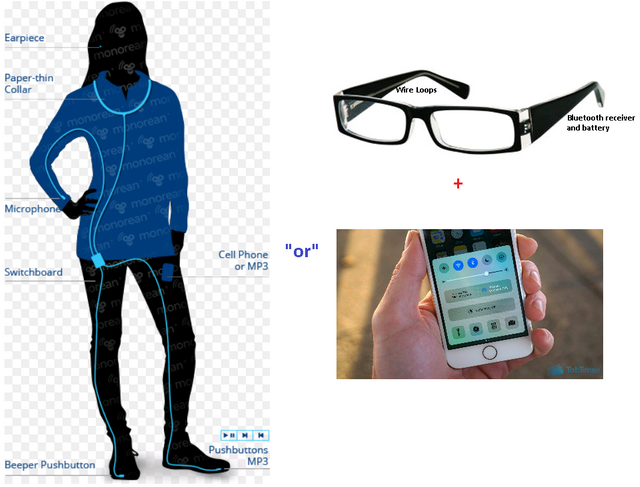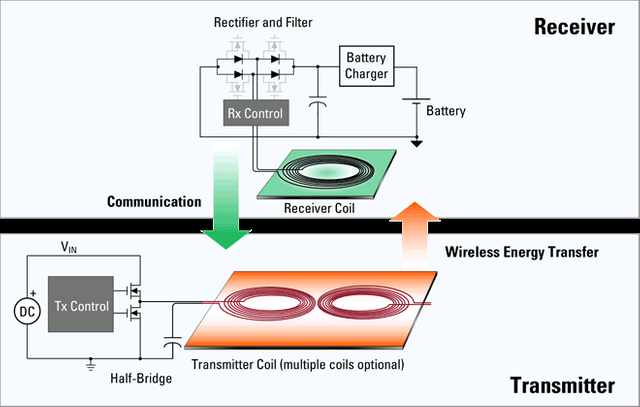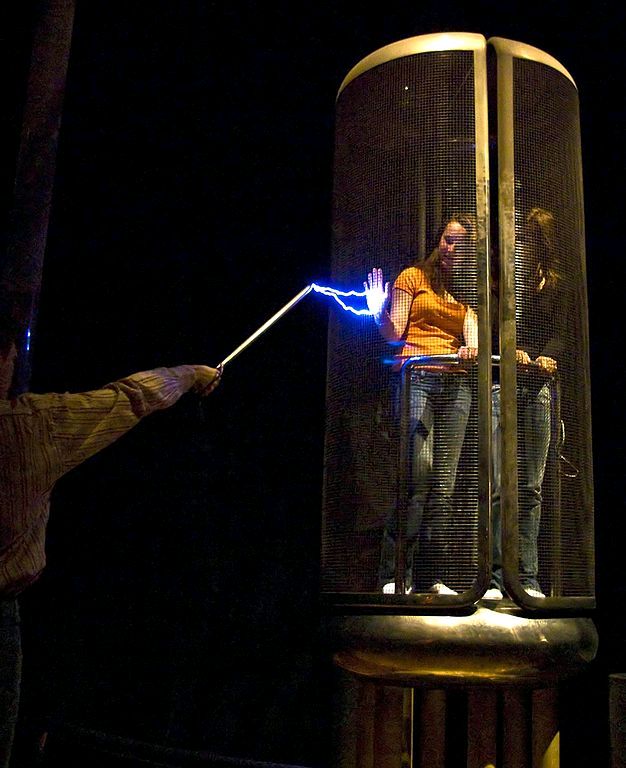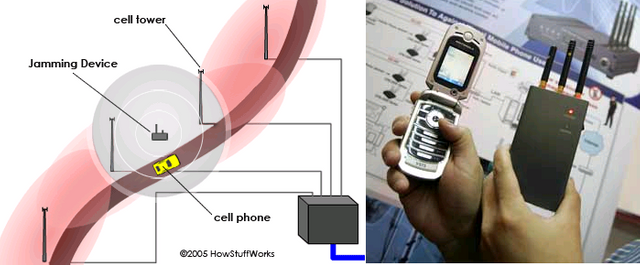Tinnitus or Quantum Cheating?
Just like Archer, I also have mild tinnitus. In my case due to exposure to loud rock music in my youth. I know some people that also hear things they shouldn't. About them is this post.
I was a happy dude, minding my own business. Doing my usual manly science stuff. When a couple of days ago, I found that a group of people I went to college with cheated a huge test in postgraduate education.
They used mini earbuds and minicameras to communicate with a group of people outside, experienced in these tests and ready to crowd-solve the questions with the help of Dr. Google. The price they paid was $10.000.
5k upfront, 5k when the job was done.
Today the results came and they landed pretty good positions. I'm furious with them. All of them.
1. The Cheaters
2. The Administrators.
The Cheaters
In my country (Colombia) medical specialties are super competitive. We are the only country in the world where doctors are required to pay for their training instead of being paid.[1] Medical residencies are a hybrid of training/job. We are also the country with the worst ratio of specialists to family physicians in Latin America.
Each year 150-500 doctors compete for 1 position in a medical specialty. Only 1/5 ever becomes a specialist.[2] This creates a self-imposed scarcity that makes wages of specialists 3x-10x that of a general practitioner.
"Resources are finite but cons are infinite". Finite reward pools increase the incentives for cheating (this is a problem that is starting to increase in other postgraduate fields more and more)
Is not surprising they cheated. Is disgusting and shameful because it shows they are not only bad professionals. They are also dumb and gullible.
They paid 10k for something that is worth like $100 at best.
Probably the most important scientists, in my opinion, is James Clerk Maxwell. I think when people look back at the past a couple millennia from now (if civilization keeps on advancing) other landmarks will pale in comparison. Faraday's law of induction, later generalized to be the Maxwell-Faraday equation is what I'm gonna try to describe and its impact on this situation.
Back in 1835, Michael Faraday discovered electromagnetic induction. Is a phenomenon that consists in the creation of a current through a circuit in response to a moving magnetic field. This was evidenced by the readings of a galvanometer connected to a coil[3] A moving magnet creates an electric charge on the receiver. |
The opposite is also true, an alternating electric charge creates a magnetic field, represented by B. Changes in charge behave like the moving magnet in the previous case. |
Electromagnetism is, in reality, a quantum phenomenon. Normally an electric current would be the result of electrons traveling from one atom to the next: an electrons chain of transport.
Electromagnetic induction is the creation of an electromotive force secondary to a variation in an electric conductor by a changing magnetic field. Electrons are not being transferred,
"at least not without quantum entanglement". What happens here is that the surfaces of the wires get connected by a magnetic field. The effect this field has on the receiving surface is dependent on the magnetic flux:- The magnetic field's strength
- How much surface is available
- The orientation of the magnetic "lines" of action when they contact that surface.
And their respective product. ΦB=B S
One can think the magnetic fields like on a river and alternation (intensity or direction) as gates. Once you open or close them, you liberate the river to move in a particular direction until the flow reaches equilibrium. That variation is the electromotive force (ℇ)You can skip this if you want to. Is only for a little more mathematical completion.
A more formal way to describe it is as the surface integral of the magnetic field passing through that surface's vector area S. This is know as magnetic flux, represented by ΦB.
Since surfaces are normally not flat and regular, you can calculate the resulting vector (magnetic vector potential A) for the surface. The special case when it's parallel to the vector the cosθ is 0; If it's parallel to the vector is 1.
When the magnetic fields or the orientation of the surface are variable the product of vectors is:
The change in the magnetic flux over time creates a voltage on the reciever
ℇ is the electromotive force (EMF), ΦB is the magnetic flux through the open surface Σ, ∂Σ is the boundary of the open surface Σ; note that the surface, in general, may be in motion and deforming, and so is generally a function of time. The electromotive force is induced along this boundary. dl is an infinitesimal vector element of the contour ∂Σ, v is the velocity of the boundary ∂Σ, E is the electric field, B is the magnetic field. V is volts
B has an effect on the charged particles, in this case free electrons (-e). When it hits them perpendicularly to the electron's velocity (v) their direction changes in a circular direction without increasing their kinetic energy, this phenomenon is known as the Lorentz force.  |
This channeling of the potential energy of free electrons in the receiver creates a gradient of energy that can be continuously streamed to act as an electron chain.
The principle of "wireless" charging uses this. Every time electricity flows through a wire a magnetic field extends from it. With every new loop of that wire the amplitudes of the field increases. The resulting change this field exerts on the free electrons on the receiving side creates a potential energy that behaves like an electric current.[4]
Microphones and speakers also use this principle. You use the changes in the induced electromagnetic field to displace a membrane and the oscillations transduce the electric signal into sound.[5]
This is how is being used for cheating: Someone introduces a small neodymium magnet that comes into contact with the tympanic membrane. It becomes an acoustic transducer and a receiver of induced electromagnetic current. |
A transmitter placed somewhere in the body "wirelessly" emits the signal to the receiver. This transmitter, in turn, is connected to an amplifier that transforms the incoming digital signal of a computing device (a phone) to an electronic alternating signal. This connection can also be "wireless" and the closer it is to the receiver the less energy and the smaller it can be.

This phone is connected wirelessly to the internet, where someone is sending data to it. In this case, a group of people ready to solve questions coming from the examination room in real time or previously acquired. |
The data from the questions can be passed on by a mini camera (nowadays so small that can be hidden inside a button or a pen), also "wireless" or through voice input by a hidden microphone and by Morse code using a beeper. |
This might look high-tech or super expensive for some but is not. All the parts could be assembled for <$100 or bough already assembled for <$700. Since 2012 this type of attack has been increasing, with countries like India as the most common for it.[6]
It's only gonna get cheaper, better and smaller.
The Administrators
One way to approach this is through an arms race against this technology. You could use a Faraday Shield.
Faraday shields are mostly geometry independent redistributors by electrostatic induction of charges that come in their direction, to an electroconductive material skin effect. In order to isolate the exterior from the interior but vary in isolation depending on material and continuity of the structure. They attenuate the signal but don't cancel it. |
Faraday cages are a particular type of shields that function as high-pass filters. The gaps should be smaller than the wavelength of the incident they are trying to filter.
The problem with Faraday cages for high-frequency signals is that most cage shieldings have imperfections, so it requires a lot of layers of high-quality material to achieve insulation. Also they never fully eliminate the signal. Is a partial solution.
A relatively simpler and more reliable approach is a signal jammer. A signal jammer is a particular type of denial of service attack. Normally cell phones and other devices use a narrow band for sending and receiving waves to transport data. They use the closest transmitter available to them, in order to have the highest possible signal. In most cases a cellphone tower.
The jammer transmits random noise over several bands overloading the channels benefiting from being closer to the cellphones and having a relatively higher signal.[7] Is like trying to hear a jet engine that is kilometers away while your dog is barking next to your ear.
They are relatively inexpensive and easy to fabricate <$20. The problem with jammers is that they are illegal in most countries. Only Ukraine has proposed its use in schools since 2009.[8] They can be used to highjack security systems in cars, government buildings. It would require a collaboration between governments and educational institutions.
The best approach is a system that rewards ethics. Those systems don't reward self-imposed scarcity in any way for their monetization. This needs to be tested.
The current situation is a combination of sad and funny. Should I believe this is their last big job? This hit and they are now retired? no. I think they will keep on cheating. They will hurt patients and hide it under the rug. I have something to do about this. Is not enjoyable but at least is not boring. In my case I'll educate my faculty and try to dismantle that mafia.
See you around.
REFERENCES
Images referenced, sourced or modified from google images, labeled for reuse












A truly sad situation, and thanks for a very fascinating article about it.
FYI, Faraday cages can be penetrated with the right scalar technology.
I'm more inclined to disbelieve in the validity of tests and government regulations to validate the knowledge and capability of medical professionals. I would far rather see crowd-consensus observations and feedback that recognize true proficiency in any medical specialty.
😄😇😄

Consensus is important, mainly peers consensus. The reason we do peer review.
he reason I found about this was because one of the people that got into the specialty was by consensus among my friends and almost everyone that knew her extremely bad as a student. So we immediately suspected foul play.
Faraday shields are just filters, they never eliminate fully the signal. Is like covering your ears, attenuates the sounds but it doesn't cancel the waves. Is not a good solution long term.
I never actually considered people doing this was an actual possibility. I suppose the execution is sort of cleaver, but it's also depressing as you said, and a bit angering. The cheaters should be punished harshly.
Otherwise, great post as usual. Pretty interesting background info on how these things work.
It just makes one appreciate ethics more, never to be taken for granted. I'll do whatever I can so they get punished.

Depressing indeed :(
On an uplifting note, magnetism is always pretty darn cool! We must adapt, find clever ways to contribute true value in a world where faking successfully is easier and easier.
Cheating is part of the game. This is what I tell to my students. They are allowed to cheat, but they should make sure I won't notice. Otherwise, they can say goodbye to get a degree (at least in France) :)
I had heard the same, but I didn't ever imagine that it would be true. The cheaters are really dangerous because they will cheat thousand times. These people don't even deserve to call themselves physicians. Go on, destroy that lye.
Not my area of specialization but I understood every bit of this post. Carefully analyzed and simplified. Well done
Awh man I thought I was about to read a post about how to cure my tinnitus and was so pumped about it!
Aww, it was just a tangential connection to this situation. Sorry if I disappointed you.
Unfortunately recovering the dead cells in the inner ear is impossible at the moment. One option is Transcranial Direct Current Stimulation (tDCS) as a form of non-invasive treatment. 40% of patients reported improvement although is experimental at the moment. Other approaches use deep brain implants.
The moment we find a cure for Parkinson that's when we probably also find a cure for tinnitus. Let's be hopeful and wait.
Folmer, R.L., Theodoroff, S.M., Martin, W.H., Shi, Y. (2014) “Experimental, Controversial and Futuristic Treatments for Chronic Tinnitus.” Journal of the American Academy of Audiology, 25:106-125.
Good post, the video is offline do you have another link maybe?
Have you tried ginkgo biloba? A lot of people are positive about it. Check it out here: http://sagaert.eu/ginkgo-biloba-supplements-help-tinnitus/
thanks
Woooow!! Wonderful article. I read and understood everything. This is an high level of malpractice. If not seen in this write up or even in the video, I wouldn't have considered it a possibility. I love that video. I think the guy with the plaster of Paris is crazy.....
SHEEEEEEEEEEEEEEEEIIIIIIIIIIIIIIIIIIIIIIIIIIIIIIIIIIIIIT